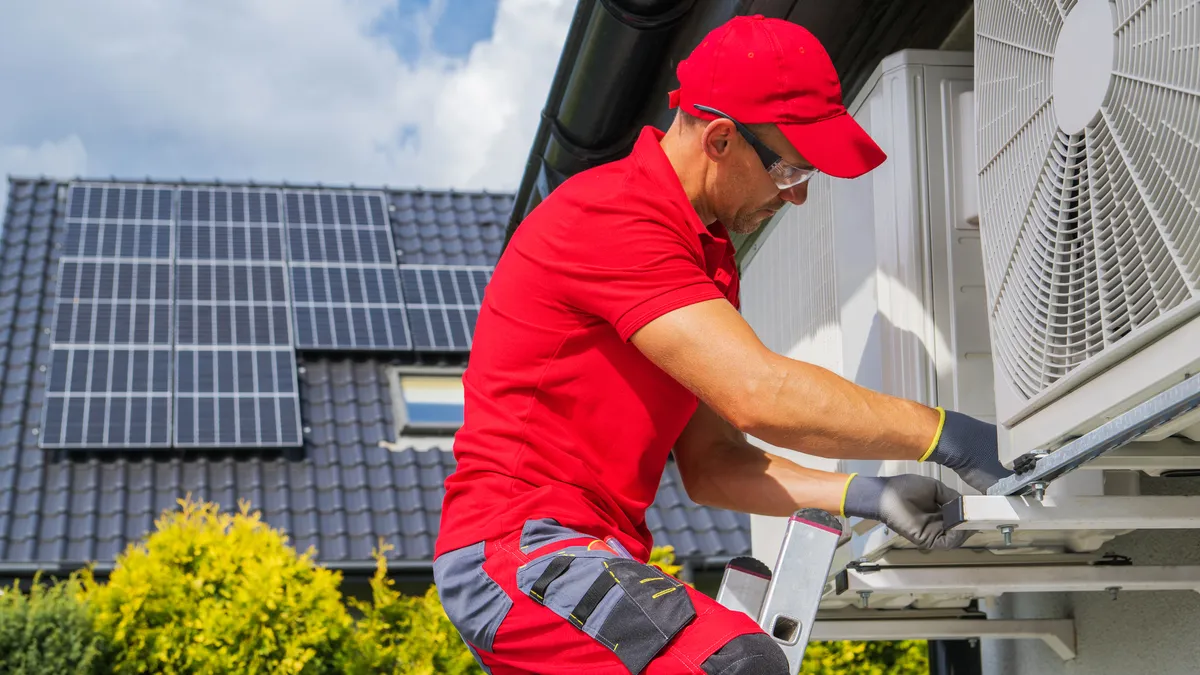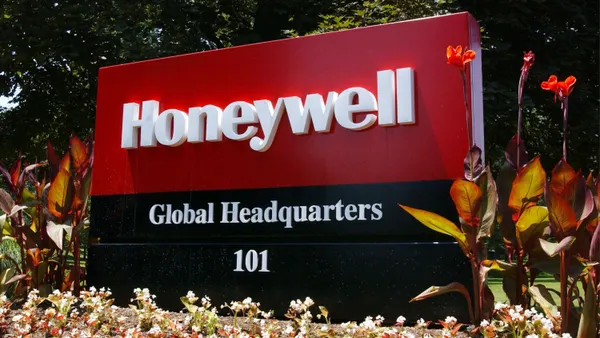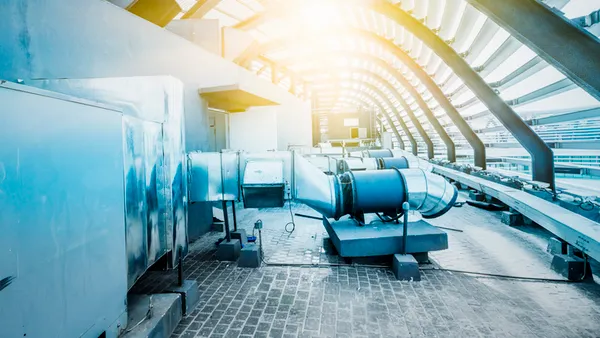Dive Brief:
- The market appears to be accepting 10% higher prices on HVAC equipment as manufacturers comply with requirements to transition to the safer A2L refrigerant over the more traditional refrigerants like R-410A, an analysis by investment bank William Blair shows.
- Meanwhile, manufacturers haven’t yet been hit with severe impacts from the uncertain market environment triggered when the Trump administration earlier this month imposed, and then paused, tariffs on almost 100 countries.
- “We believe … 2%-3% could be added on for tariffs … on top of 8%-10% A2L pricing,” say Ryan Merkel and Michael Francis of William Blair in a first quarter 2025 analysis of select HVAC manufacturers and distributors.
Dive Insight:
A2L refrigerants are considered to be safer and more environmentally friendly than traditional refrigerants and starting this year manufacturers are under a directive in the American Innovation and Manufacturing (AIM) Act to move away from refrigerants that produce a lot of hydrofluorocarbons.
The AIM Act was enacted in 2020. Since then, the Environmental Protection Agency and the American Society of Heating, Refrigerating and Air-Conditioning Engineers have released guidelines for companies to transition to the more environmentally friendly refrigerant. ASHRAE’s guidelines are in ASHRAE Standard 34, and EPA’s rule is at 40 C.F.R. Part 84, the HFC Allocation Rule.
A2L refrigerants are expected to increase the cost of HVAC systems because the refrigerant is more expensive and the guidelines require systems to incorporate safety features that go beyond those for traditional refrigerants.
“In the short term, A2L refrigerants may come with higher initial costs due to production and supply adjustments, but prices are expected to stabilize as the market adapts,” a GE Appliances analysis says.
“We did not hear of any [manufacturers] stumbling on their A2L transition,” the William Blair analysts said. Based on their querying of distributors, they estimate A2L will increase HVAC costs 8-10%.
“A2L products started selling in mid-February and represented 90% of equipment sales exiting March,” the analysts said. “Early signs are that A2L pricing is sticking.”
The Trump administration’s across-the-board tariff policy was announced in the beginning of the second quarter, April 2, so first quarter tariff impacts reflect the administration’s earlier moves affecting Mexico and China. Products from Mexico subject to the United States-Mexico-Canada free trade agreement are exempted from the tariffs, which is expected to reduce many manufacturers’ exposure. But manufacturers still face exposure to tariffs on steel and aluminum as well as from tariffs imposed on China prior to April 2.
Manufacturers “announced price increases of 2%-3% for steel, aluminum, and China tariffs and we believe another 2%-3% could be added on for tariffs announced April 2,” the analysts said.
Despite the two developments impacting the HVAC sector – the refrigerant transition and the tariffs – the analysts said the quarter ended well for the sector.
“Our first-quarter HVAC index was up 2% on steady demand,” they said, although one headwind is a growing attractiveness of repairing old HVAC systems rather than replacing them because of the escalating costs of the systems. “We’re worried about repair over replace in 2025 but think the A2L transition rules will cause more replace than repair.”
Still, costs could have been even higher had the administration’s earlier tariffs against Mexico stayed in place. Because the industry has a lot of exposure in Mexico, where many companies manufacture their systems, the sector dodged a bullet when the tariffs on Mexico were pulled back under USMCA.
“We believe 20%-plus tariffs on Mexico imports would have been highly disruptive,” they said. “Lennox, Carrier, Trane, and York all have sizable production in Mexico, as do major component manufacturers.”
Should the Mexican tariff situation change, they said, their outlook would change as well. “We will not update our models to reflect demand destruction or higher prices for tariffs until we see concrete evidence of changing conditions,” they said.
Their analysis is directed at equity investors of three companies in the sector: Watsco, a distributor, and Lennox and AAON, manufacturers.











